
If you wanna learn more about portrait drawing, check out my “Portrait Fundamentals Made Simple” course.
It’s a very beginner-friendly course that walks you through all the basics of portraiture, from constructing a basic head, facial proportions, drawing the features, and finally drawing a realistic portrait step-by-step.
[UPDATE] Congratulation to John F. Reynolds for being the winner of this giveaway! John, I sent you a Facebook message. Please just reply with your shipping address and I will send out the prize right away.
Thank you to everyone for your support and participation! Please go here to see the current running contest: https://mydrawingtutorials.com/giveaway
Lesson Details
Step 1 – Sketch In Nose Layout
The first step is to decide how wide you want your drawing to be and place 2 horizontal dots on your paper. These dots will represent the widest points of the nose.
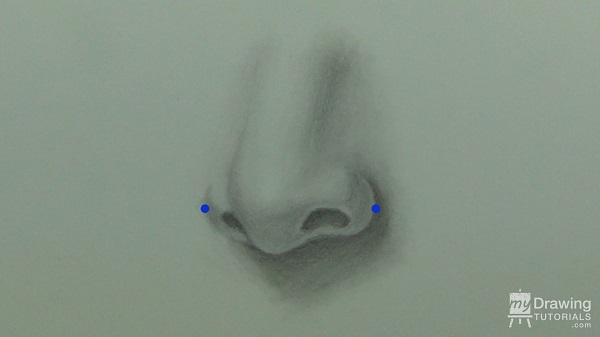
Next place 2 vertical dots on your paper. These dots will represent the top and bottom point of your nose. Be sure to keep the height and width of these dots proportional to that of your reference.
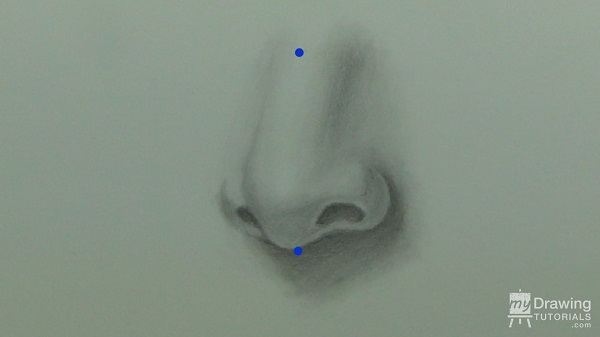
Now use these dots as a guide and lightly sketch in the layout. For this, I’ll be using an HB pencil.
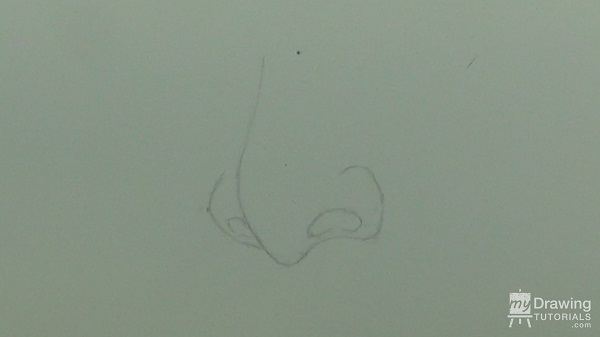
One of the key to drawing a realistic nose is to not have any hard lines in your drawing. Most of the definition of the nose is created with shading and contouring, rather than hard lines.
So before going on to the shading phase, I’m going to take my kneaded eraser and lighten the lines.
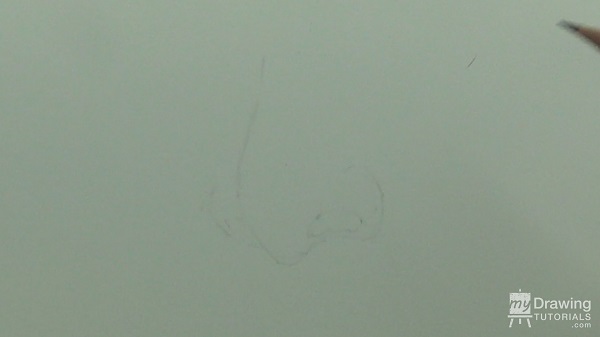
Step 2 – Shading The Nose
To begin the shading, I’ll fill in the darkest areas of the nose first, which would be the nostrils.
Even though this is the darkest area, I’ll keep my shading relatively light for now. I want to do a light round of shading first to see what the nose will look like before I commit to the really dark tones.
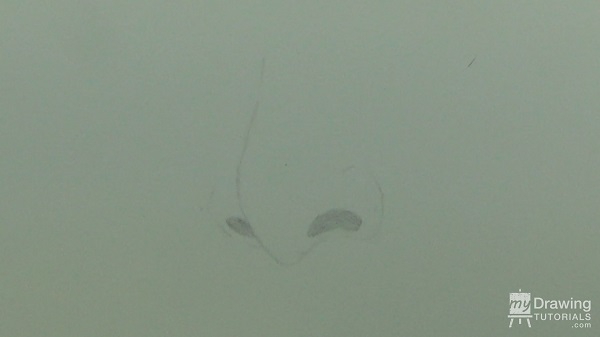
The light source for this drawing will be coming from the top left, so there will be a cast shadow underneath the nose here.
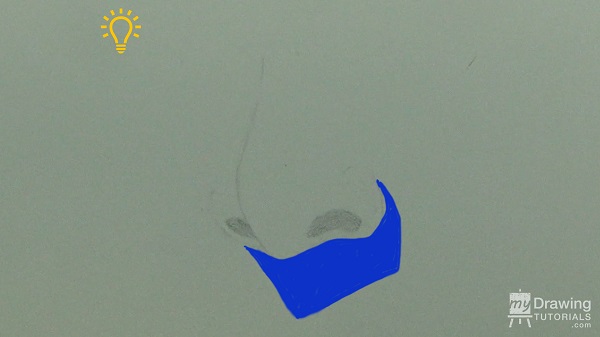
Let’s fill that in.

Next, I’ll mark out the portion of the nose that will be in shadow and fill that in.
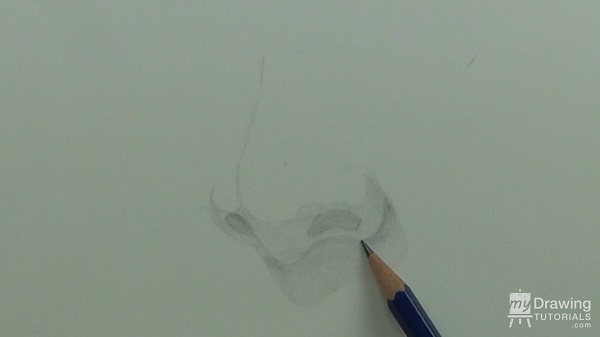
OK, so now our nose is beginning to have some dimension. To make the different tones stand out from each other a bit, I’m going to darken the nostril and the cast shadow some more.
Next, I’ll use a tortillion to smooth out the shading we have so far.
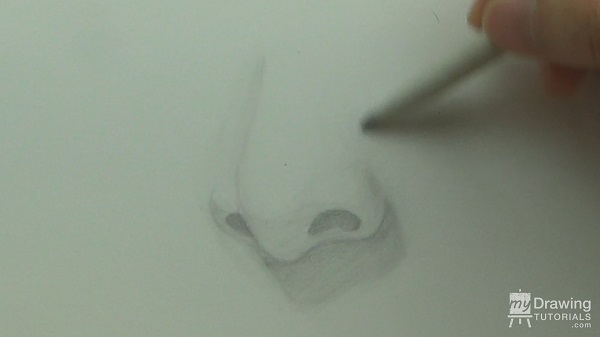
Now, let’s add some light tone to the bridge of the nose while leaving a highlight in these areas.
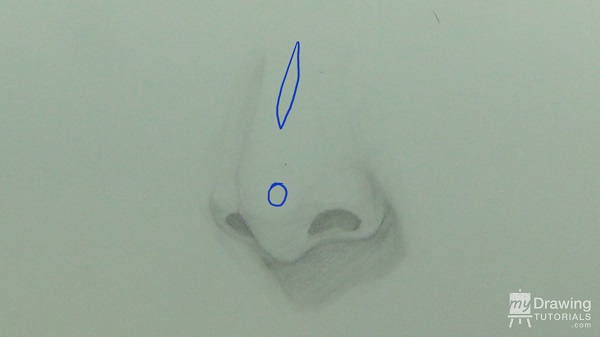
Step 3 – Adding Contrast
And I’ll also darken the other shadows as well to create more contrast.
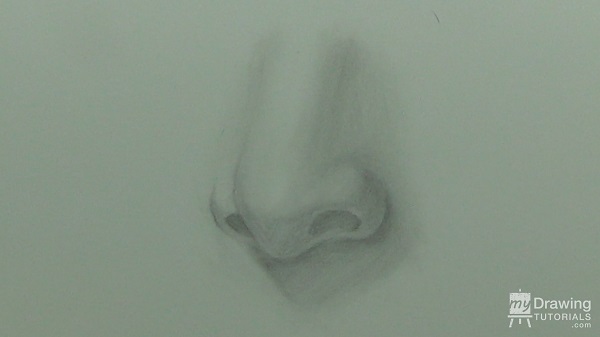
And the last phase is to just come in with my tortillion and a 2B pencil and reinforce the darker areas to give our drawing even more contrast.
This will help make the drawing pop out more and give the nose more dimension.
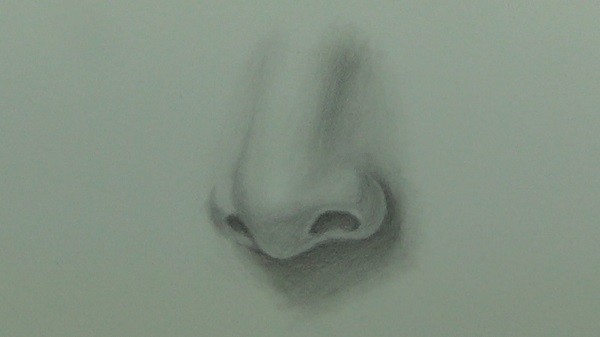
And that’s it, we’re all done!


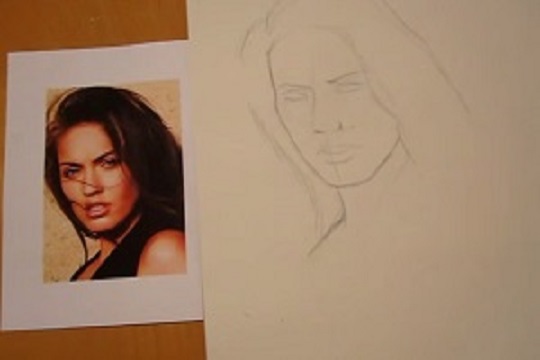
![Drawing Realistic Portrait Series [1 of 8] – Intro & Materials](https://mydrawingtutorials.com/wp-content/uploads/2012/08/Portrait-Lesson-1.jpg)
![Drawing Realistic Portrait Series [2 of 8] – The Fundamentals of Shading](https://mydrawingtutorials.com/wp-content/uploads/2012/08/Portrait-Lesson-2.jpg)


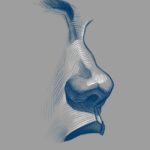
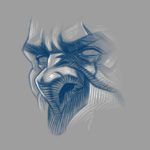
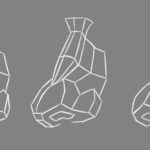

Love it so simple and enjoyable
Thanks admin for such a post. so simple to remember so simple to execute and so simple to get results….